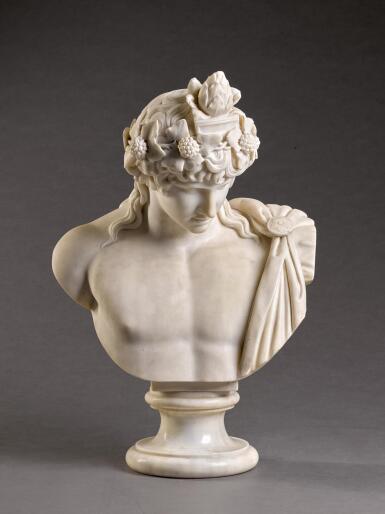19th and 20th Century Sculpture
19th and 20th Century Sculpture

ITALIAN, 19TH CENTURY, AFTER THE ANTIQUE | BUST OF ANTINOUS
Auction Closed
July 10, 03:03 PM GMT
Estimate
30,000 - 40,000 GBP
Lot Details
Description
ITALIAN, 19TH CENTURY
AFTER THE ANTIQUE
BUST OF ANTINOUS
white marble
74cm., 29⅛in.
Antinous was the male lover of the Roman Emperor Hadrian (AD 76-138). Celebrated throughout history for his good looks, Antinous has subsequently become a symbol of same sex love. Relatively little is known about Antinous’ life, aside from the fact that Hadrian toured Asia Minor in AD 123 and may have been introduced to the youth at that time. Antinous was in Hadrian’s retinue by AD 130 and is recorded in a poem by the Alexandrian Greek Pankrates who describes the Emperor vanquishing of the Marousian Lion in the Libyan desert. Shortly after this event, Antinous tragically drowned in the Nile in mysterious circumstances. Many theories have surrounded his death, including forced suicide by jealous courtiers and ritual sacrifice, though Hadrian maintained it was an accident. Whatever the explanation behind his death, at 19 Antinous was becoming a man, and so his relationship with the Emperor was untenable. Same sex relationships in ancient Rome were governed by an unspoken moral code of dominance and subservience; there could be no suggestion that the Emperor was submissive to his lover. The effect of Antinous’ death was profound, Hadrian established a city in Egypt, Antinoopolis, in honour of the youth, and even encouraged his veneration as a god. This beautifully carved marble follows the celebrated Braschi Antinous in the Musei Vaticani, Rome (inv. no. 256) in which the youth is portrayed as Dionysos-Osiris. There is a plaster copy at Castle Howard in Yorkshire.
